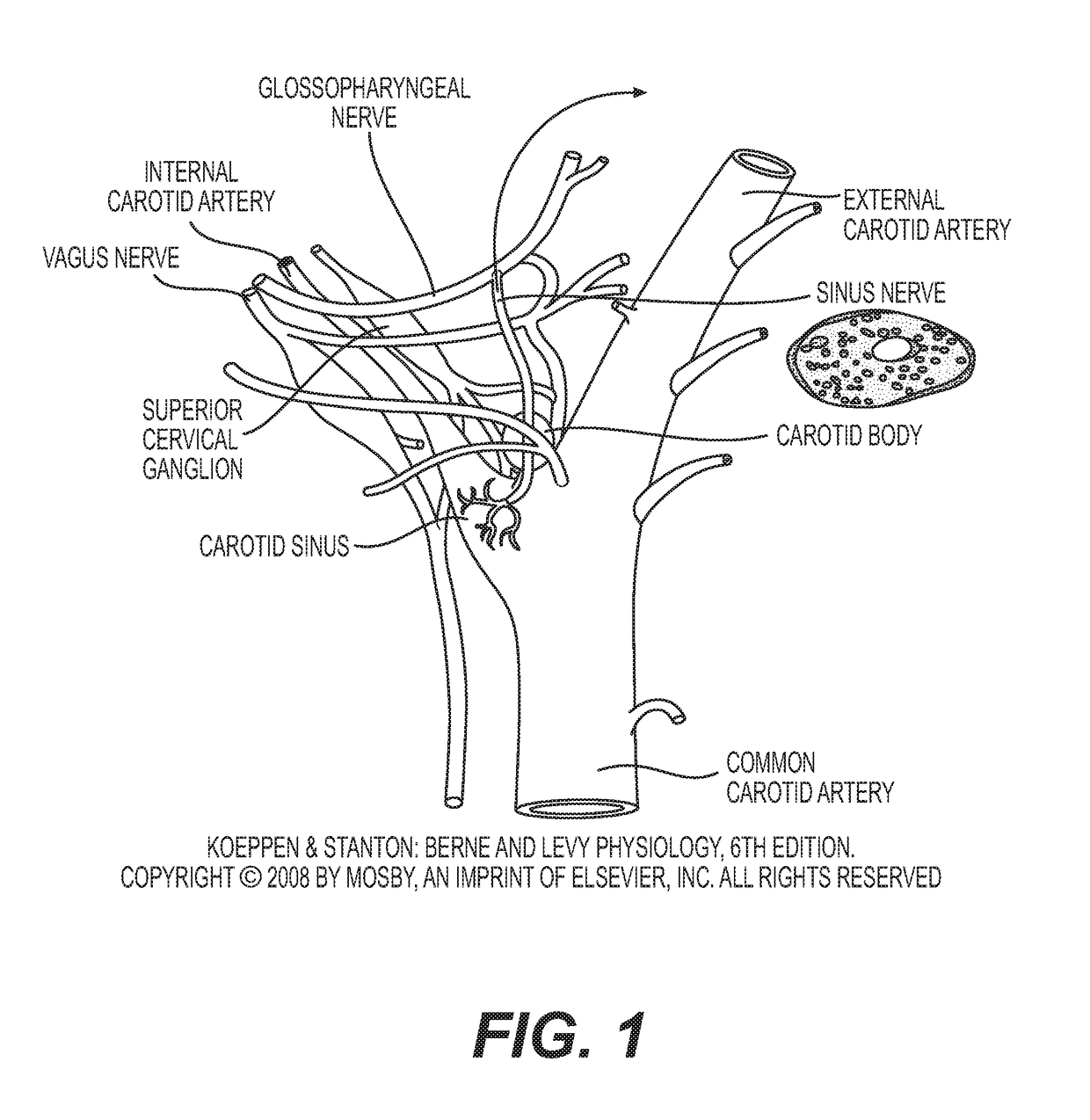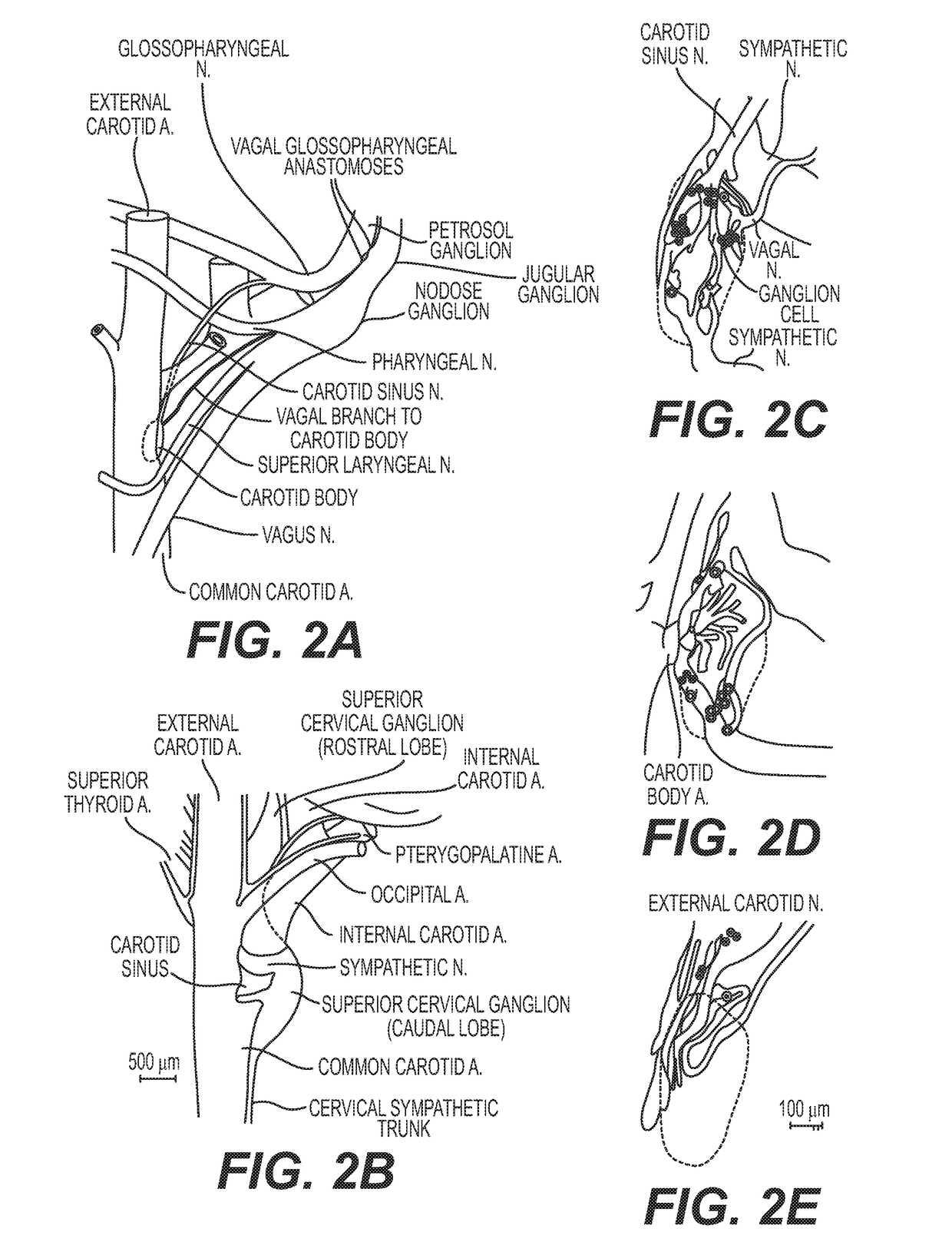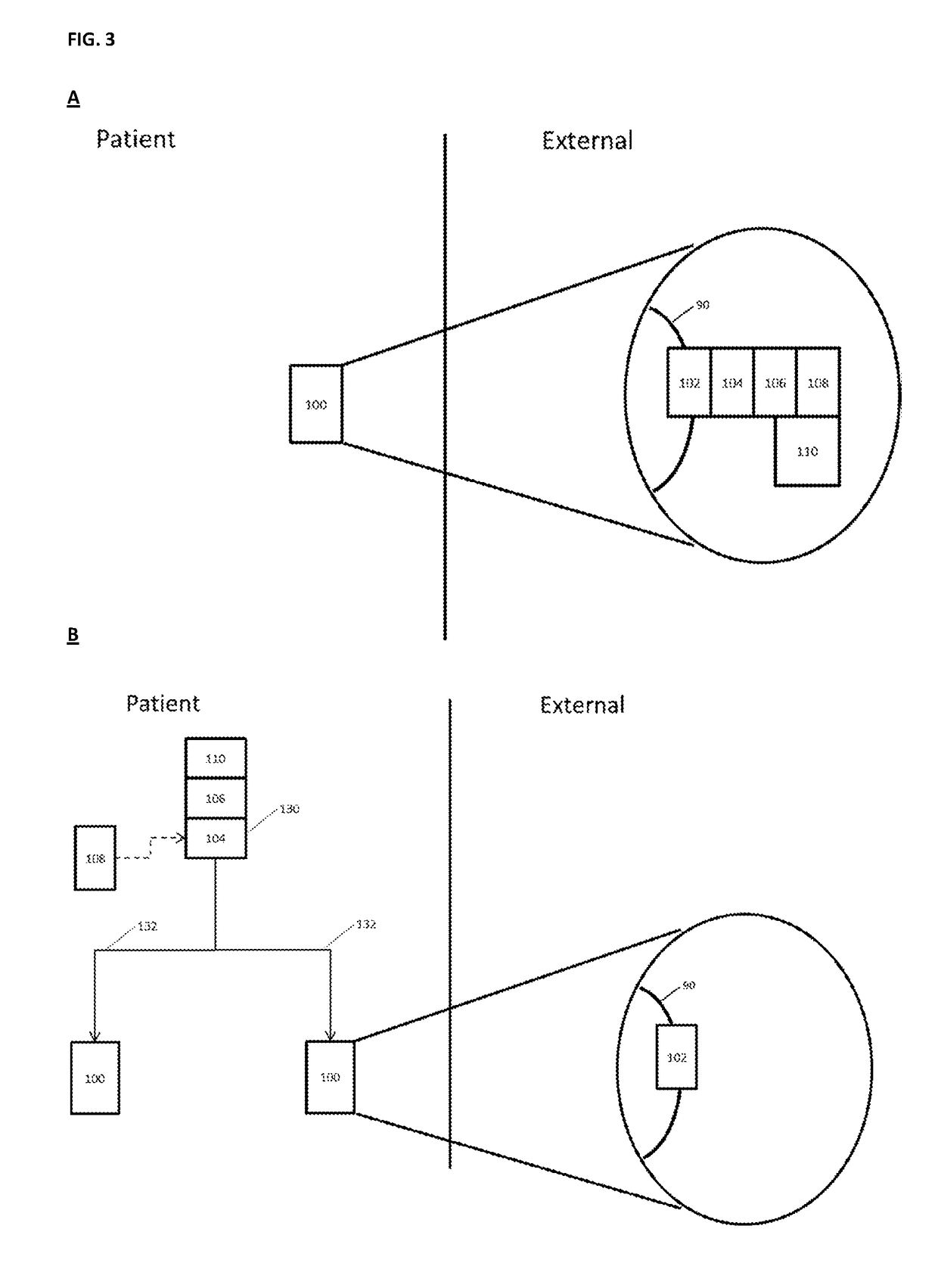Neuromodulation device
a neuromodulation device and neuromodulation technology, applied in the field of neuromodulation devices, can solve the problems of inadequate neural control, cognitive impairment, vision problems, etc., and achieve the effect of increasing localized sympathetic activity
- Summary
- Abstract
- Description
- Claims
- Application Information
AI Technical Summary
Benefits of technology
Problems solved by technology
Method used
Image
Examples
example 1
Results
[0181]Bilateral CSC / SCG Stimulation Reduces Apnoeas and Disordered Breathing in Conscious Rats
[0182]Hypoxic-hypercapnic (H-H) gas challenge is a recognised model for inducing and analysing disordered breathing, including apnoeas. Conscious Sprague-Dawley rats were exposed to H-H gas challenge and bilateral stimulation of CSC (or sham) was applied.
[0183]As seen in FIG. 4, bilateral stimulation of the CSC markedly reduces the occurrence of disordered breathing, including apneas, in rats that upon return to room-air following a hypoxic-hypercapnic (H-H) gas challenge (Indicated as “Post” in FIG. 4A).
[0184]FIG. 4B shows that the frequency of apnoeas is greatly reduced as a result of bilateral CSC stimulation, as is the duration of each apnoeic episode. This results in a greatly reduced aggregate time spent in an apnoeic state.
[0185]Bilateral CSC / SCG Stimulation Improves Cardioventilatory Performance and Decreases Upper Airway Resistance
[0186]In an alternative animal model (anaest...
example 2
[0202]Anaesthetised Zucker fat rats (15-18 wks) underwent bilateral stimulation of the CSC (using cuff electrodes). The signal applies was 5 Hz, 2 ms pulse width, with current of 0.1 mA, 0.5 mA, 0.8 mA or 1.2 mA. The results are shown in FIG. 13. 0.8 mA current resulted in a decrease in airway pressure and an increase in blood pressure. Current of 1.2 mA resulted in a marked decrease in airway pressure as well as decrease in blood pressure.
[0203]Changes in stimulation frequency also differentially impacted blood pressure and upper airway pressure. High frequency stimulations decrease blood pressure sharply versus lower frequencies—for example, 2.5 Hz resulted in only a small drop in blood pressure versus more significant falls when higher frequencies were used (FIG. 14). Bilateral stimulation using 0.5 mA, 2 ms pulse width, 5 Hz was determined to result in upper airway pressure being decreased significantly without blood pressure dropping significantly (FIG. 14).
[0204]Changes in sti...
PUM
 Login to View More
Login to View More Abstract
Description
Claims
Application Information
 Login to View More
Login to View More - R&D
- Intellectual Property
- Life Sciences
- Materials
- Tech Scout
- Unparalleled Data Quality
- Higher Quality Content
- 60% Fewer Hallucinations
Browse by: Latest US Patents, China's latest patents, Technical Efficacy Thesaurus, Application Domain, Technology Topic, Popular Technical Reports.
© 2025 PatSnap. All rights reserved.Legal|Privacy policy|Modern Slavery Act Transparency Statement|Sitemap|About US| Contact US: help@patsnap.com



